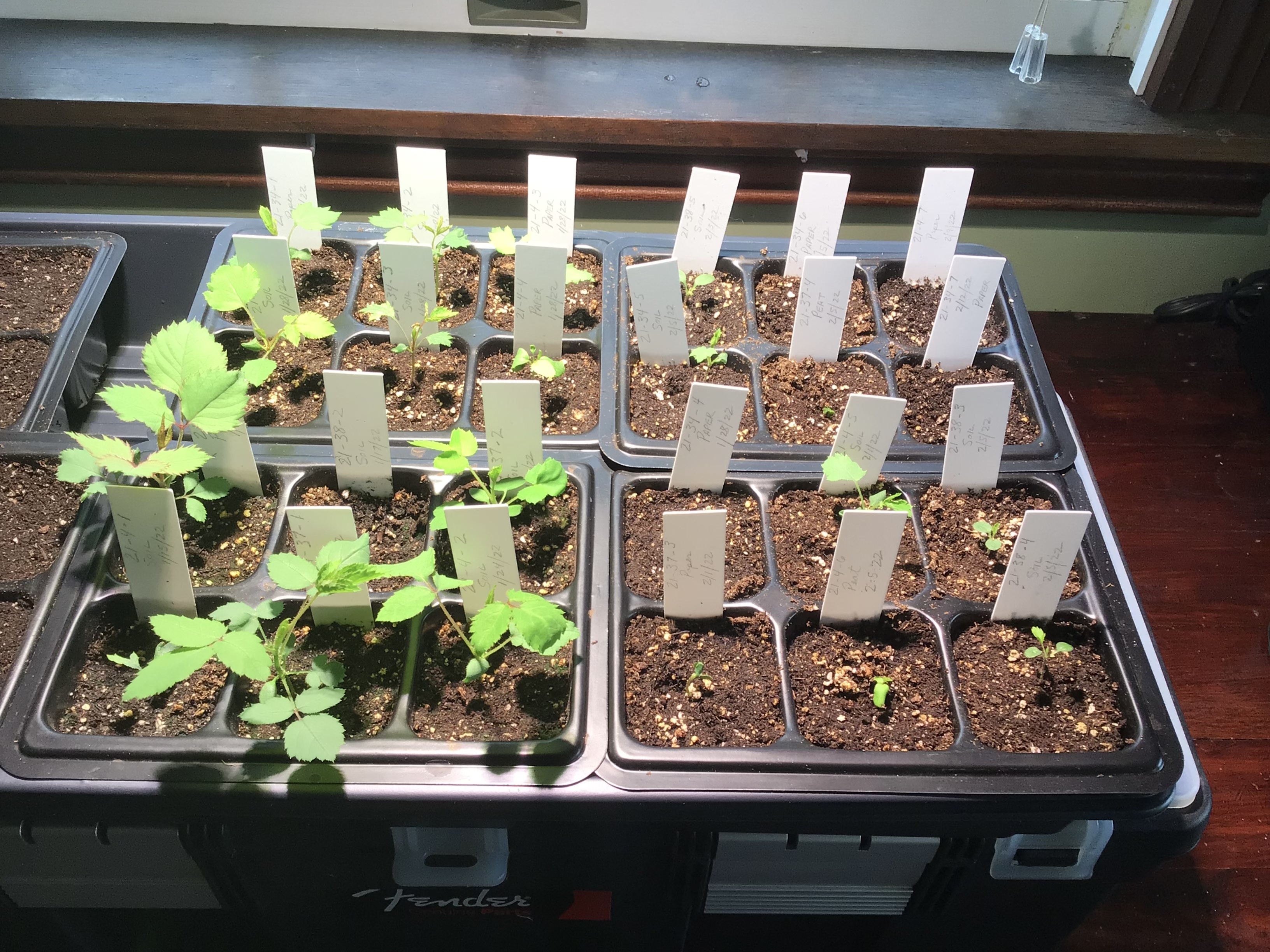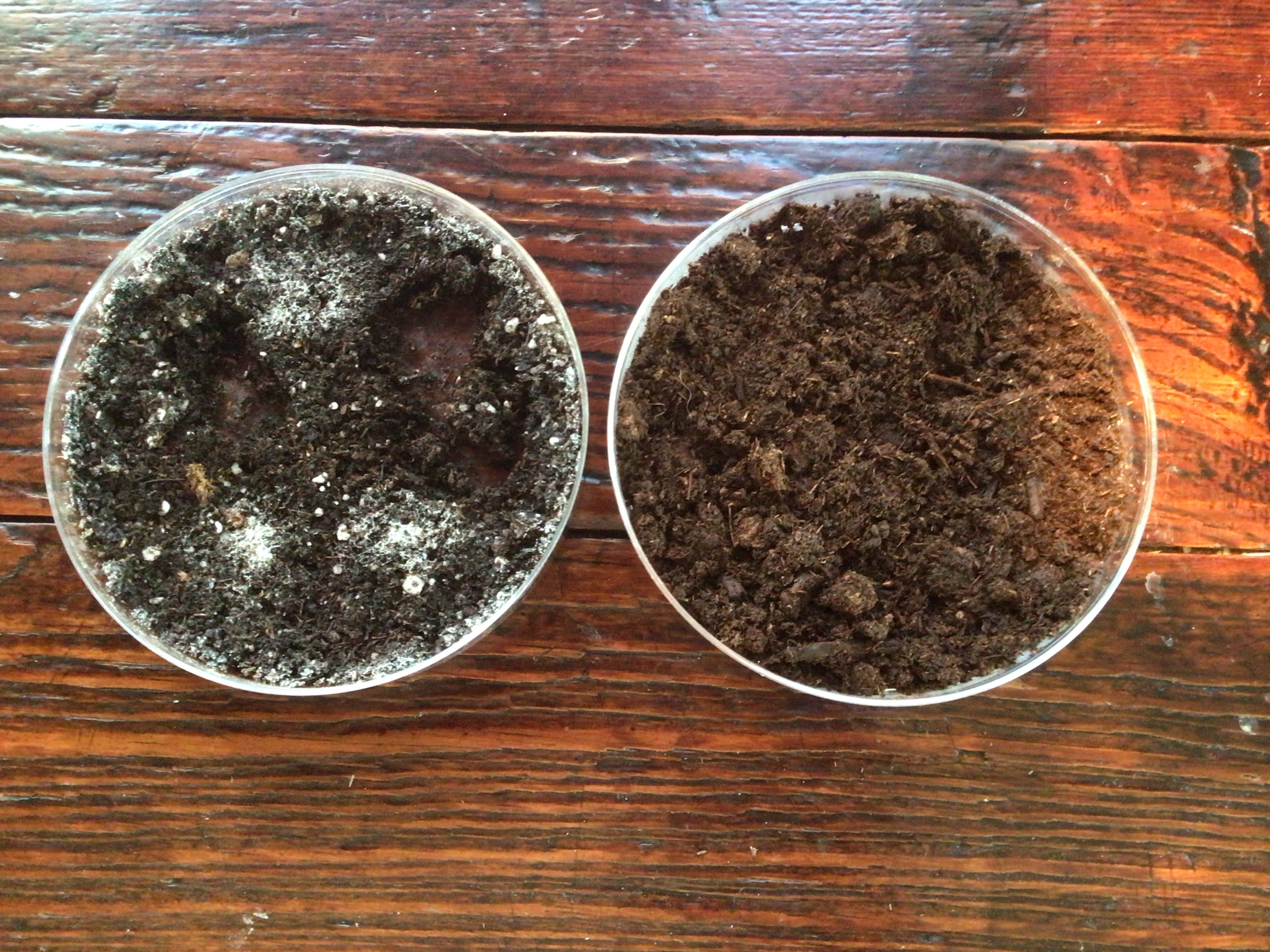Hello everyone. This is my first post, because frankly I haven’t felt until now that I’ve had anything to add to the conversation.
I began in the spring of 2021 to make some use of my (mostly) heirloom rose garden of perhaps 100 specimens, following the general guidelines in the RHA’s excellent publications “Rose Hybridizing For Beginners” and “The Next Step”.
One area where there doesn’t seem to be a general consensus is in the media used for stratification. But in scouring the forums, it seems the top 3 by popularity might well be paper, some form of potting soil, and sphagnum peat. Apologies to Jim Sproul using water spritz only, and Kim Rupert using nothing, maybe I can add those at a later date. Anyway, I did not come away with a clear idea of a “best practice”.
Therefore, I decided to split each of my 2021 crosses equally across those three in a controlled experiment. This is hardly an overwhelming number - 6 unique crosses, 60 total seeds - but there does seem to be a trend emerging.
All seeds were soaked 10 minutes in weak Captan solution. The media placed in Petri dishes:
- Canadian Peat (pH 3.5)
- Fertilome Seed & Cutting Mix (ca. 80% peat, 20% Perlite, dolomite and limestone added sufficient to neutralize pH, no added fertilizer)
- Whatman filter paper #1
The peat and “soil” were wetted with Larry Davis’ recommended 10mN calcium nitrate solution, and then arbitrarily hand squeezed until they seemed “right” and equal. The filter paper dishes each received 2ml of the solution. Distilled water was then subsequently added as necessary to maintain the same visual level of moistness.
All dishes were then kept at room temperature for 4 weeks, followed by 6 weeks in refrigerator. All dishes were then moved January 3 to my unheated garage where temps have varied from ca. 40 to 60F. First sign of germination occurred 1/15, and as of today (2/13), 25 seeds have been transferred as they germinate to flats.
Finally, here are the findings thus far:
“Soil”: 65% germination
Paper: 40%
Peat: 10%
The difference is even more remarkable when I note that the majority of these germinations occurred in the first 4 weeks, and for awhile, I thought I would have no seedlings at all from the peat. My gut feeling is that the difference between paper and soil is not statistically significant, but I haven’t crunched the numbers.
The most obvious reason seems to be the low pH of the peat somehow inhibiting germination. It certainly does seem to inhibit the growth of mold, which is prolific with both paper and soil. After all, the potting mix is largely peat itself, only pH balanced.
Admittedly, the seeds in straight peat could be late bloomers, and even exceed the success in soil, but I rather doubt it. Does anybody with more experience (which should be about everyone!) have anything to add? Am I missing something, or does anybody see a flaw in the methodology? Thanks.

